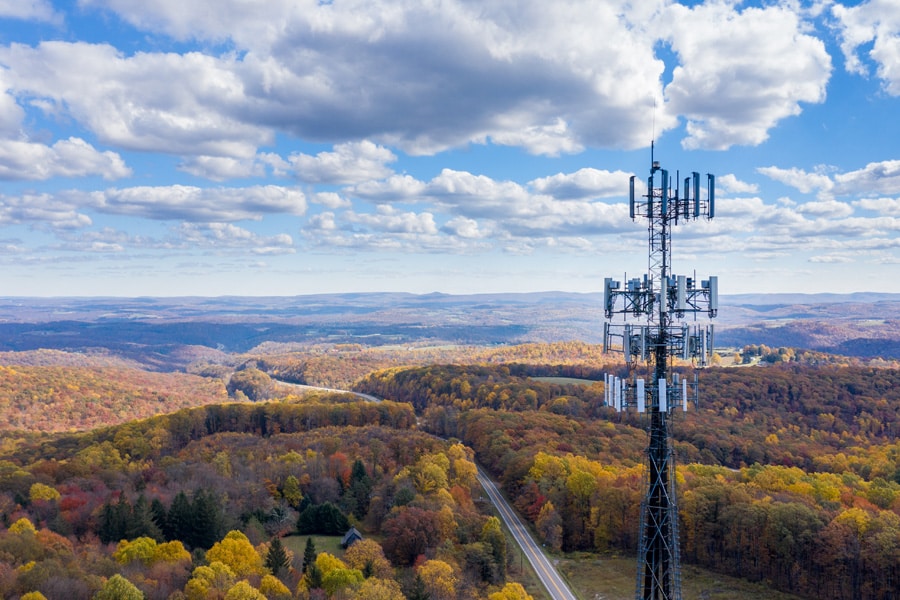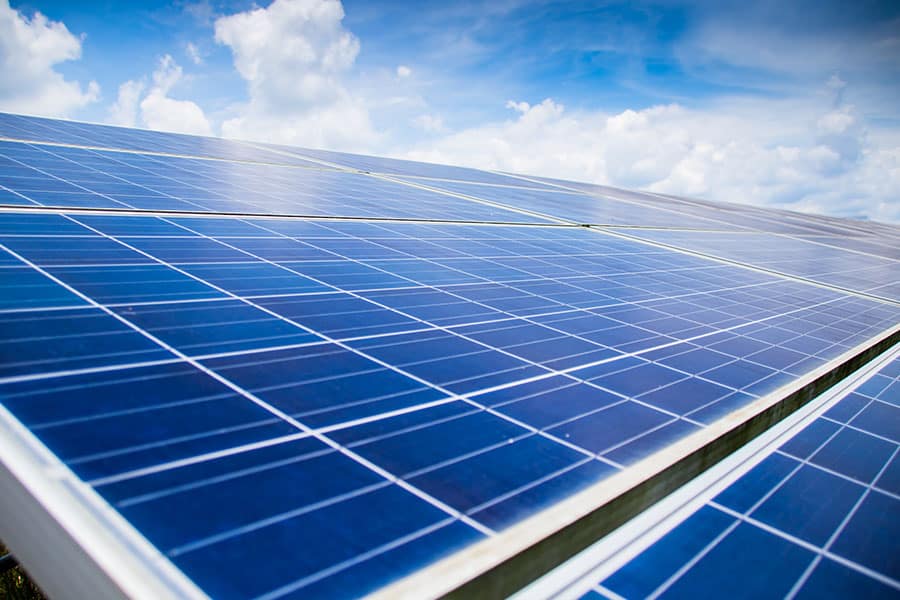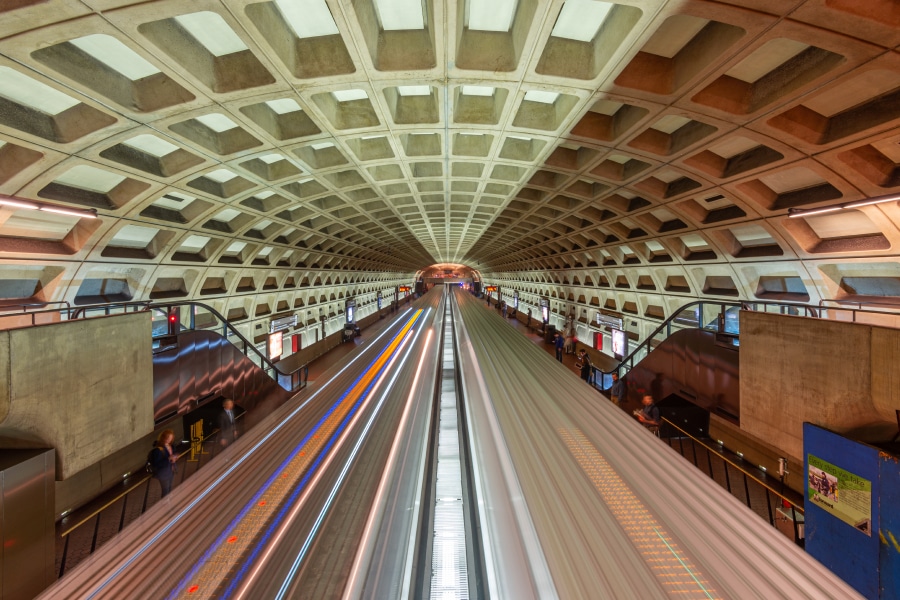During the COVID-19 pandemic, much of the world went online—seemingly almost overnight.
From schools to work to everything else in between, the internet allowed the global economy to avoid grinding to a complete halt. But while most in the developed world made the transition relatively easily, for communities lacking internet infrastructure, the move to this enhanced online-centric world presented a major problem.
Now, California is moving to make distanced work, learning and connection accessible to all its residents, with its ambitious Broadband for All initiative. It’s an effort that will require the construction industry’s help to succeed. Built spoke with Scott Adams and Mark Monroe of the California Department of Technology about the growing importance of universal internet access and the role construction will play in carrying out the initiative.
Why broadband for all?
With so many infrastructure-related challenges facing California and the rest of the world, why make expanding broadband access a priority?
To Monroe and Adams, the answer is simple: because the internet is increasingly essential when it comes to accessing critical communications and information technology. This has become especially evident in the post-COVID world, where the rise of remote and hybrid work, as well as a host of other online-centric ecosystems, have made accessing broadband essential. California recognizes this as an issue it needs to address.
“All of the state’s broadband efforts serve the same purpose: to close the digital divide and prioritize connectivity for all Californians,” Monroe said. “Broadband is essential for vital services and opportunities, but millions of Californians still lack adequate broadband service or the devices and skills to use it.”
The so called “digital divide” describes the gap that particular communities or demographics face when it comes to accessing the online world. This gap tends to be particularly acute when it comes to lower-income communities. According to one report, in California households headed by seniors, non-college graduates and with annual incomes under $50,000 are the most likely to lack internet access—as well as access to the opportunities and information it provides.
California has been working to close the digital divide in earnest since 2020, when Gov. Gavin Newsom issued an executive order for the state to improve its connectivity. “The executive order also directed the Broadband Council to develop a new Statewide Broadband Action Plan to promote digital equity throughout California,” Adams explained.
The Broadband for All Initiative is one result of this sweeping undertaking.
“As part of the state’s 2021-22 budget, California made a historic $6 billion multi-year investment that will give more Californians access to broadband coverage,” Adams said. “California is bridging the digital divide by facilitating equitable, affordable access to high-speed internet service in every corner of the state.”
Closing the digital divide at the ‘middle mile’
What’s the most efficient way to get Californians—and other internet-deprived areas—online? Monroe and Adams agree—it’s all about the “middle mile.”
This is a technical term used in the broadband industry to describe the segment of the network that links the operator’s core network to the local network plant, where it then branches out into the so-called “last mile,” composed of local telephone lines or other cables that reach directly to the local consumer’s home.
“The middle mile is the physical fiber optic infrastructure needed to enable internet connectivity,” Monroe explained. “It is made up of high-capacity fiber lines that carry large amounts of data at high speeds over long distances. An open-access network gives providers and entities access to broadband infrastructure that will allow any networks to connect on equal economic and service terms.”
This critical, and often overlooked, component of broadband infrastructure is essential to internet connectivity, and experts say that creating middle mile fiber optic construction is the key to getting more Americans online, bridging the digital divide once and for all.
A number of local agencies responded to Newsom’s call to get California online, and in 2021 the governor launched the first round of 18 broadband infrastructure projects, which Monroe and Adams described as “part of the world’s largest initiative to bridge the digital divide.”
“Several parties are involved in the planning, construction and production development of the state’s middle-mile initiative,” Monroe added. “The initial 18 locations include a range of projects across the state to increase internet access for unserved and underserved communities. These communities include local governments and tribal governments that are preparing for broadband expansion. Project selection was based on needs of unserved and underserved areas and aligned with ongoing and planned Caltrans [the state’s transportation authority] construction projects.”
With so much ground to cover, a large amount of interagency communication is critical. But by working together, Monroe and Adams said that California is gearing up to close that final middle mile. “Several projects are expected to break ground this year,” Adams said, all of which are featured in the Broadband for All initiative’s interactive online map.
Mixed methodologies, consistent results
With support from a number of agencies, Monroe and Adams said the Broadband for All Initiative is taking an eclectic approach to the construction of that critical middle mile.
“The middle-mile broadband network will be implemented using a variety of approaches,” Monroe said. “Most of the network is intended to be built, but we will use existing infrastructure where it’s most cost-effective.”
For most of the projected 10,000 miles of the project, Monroe and Adams said that Caltrans is taking the lead. “The majority of the project will be a standalone project developed by Caltrans and constructed by private contractors,” Adams said. “Some projects are ‘Dig Smart’ opportunities, in which high-speed fiber optic cables will be laid alongside existing construction projects. Other projects will involve leasing of existing cables, or a hybrid method.”
Although the techniques used to lay the fiber vary the state needs to purchase a considerable amount of optical fiber and other materials to get the job done. “California’s broadband initiative materials needs are significant,” Monroe said. This May, the state’s Department of Technology awarded contracts to two vendors for nearly $225 million worth of materials, a move Monroe and Adams said, “will allow the state to purchase enough optical fiber and other materials to construct 3,000 miles or more of the network.”
While starting with a not insignificant 3,000 miles, Monroe and Adams said the project is gearing up to close all middle mile gaps across the state. “Caltrans is conducting preconstruction activities including permitting and design analysis on all 10,000 miles,” Adams said. “Some of these projects are expected to break ground this fall.”












